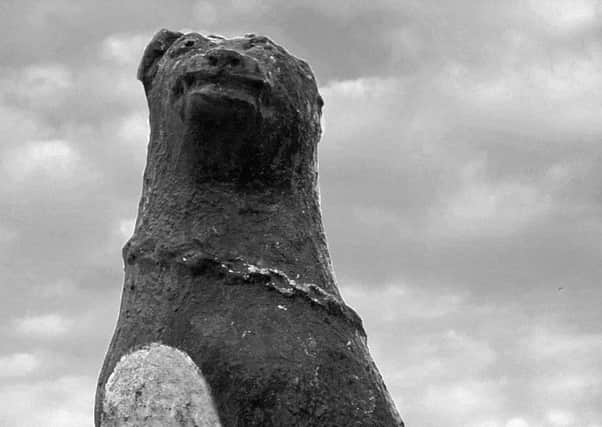Wee dug of Lanark haunted its killer to her grave!


Too much, perhaps, to notice, high above them, perched on a roof, a small statue of a dog, just yards from the site of William Wallace’s home and within sight of the statue of The Braveheart on the town steeple.
Most Lanarkians are taught from childhood at least part of the sad tale behind this unlikely Royal Burgh landmark but from now on curious tourists are also to be told the full, sorry shaggy-dog story.
Advertisement
Hide AdAdvertisement
Hide AdA major re-print of the popular Lanark Heritage Trail booklet is about to be published and, for the first time, the locally famed ‘Girnin’ Dug’ of the Castlegate is to be featured on the front cover. Guided tours of the town will also feature a full explanation for the grimness of the canine’s expression.
The story has its beginnings in the early 19th century and Lanark’s then flourishing textile economy.
Among those who profited greatly from this was John MacDonald, deacon of the then-powerful dyers trade guild from 1803 for the next two decades.
There was no better way in these days to advertise your success than to build a fine new townhouse in the heart of the burgh.
Advertisement
Hide AdAdvertisement
Hide AdHe chose the site that is now 15 Castegate and applied to the Town Council for permission to start building his new home.
There was one major objector, namely the waspish but influential Miss Mary Inglis of the nearby Vere House, the latest in a long line of a family which had lived in Lanark for two centuries.
Despite her opposition – and to her great displeasure – the council sided with MacDonald and work began constructing his new townhouse.
The deacon personally supervised the construction and it couldn’t have escaped the notice of the resentful Miss Inglis that he always had by his side his beloved pet dog.
Advertisement
Hide AdAdvertisement
Hide AdTherefore, when shortly after his new home was completed and MacDonald returned there one day to find his pet dead, there was only one ‘‘prime suspect’’ – the vindictive Miss Inglis.
The grieving deacon decided that she should derive no lasting pleasure from her cruel deed and came up with a clever if macabre way of reminding her of her guilt.
He commissioned a small statue of his dog and had it placed on the gable of his house in a position which meant its baleful stare was forever fixed on Miss Inglis’ home.
Local legend has it that she went so far as to block up the window in Vere House from which she could see her neighbour’s dog’s reproachful, stony stare.
Advertisement
Hide AdAdvertisement
Hide AdVere House was eventually demolished among local rumour of a curse placed on it and its owners by the spirit of the murdered animal.
While Vere House has totally disappeared from the Lanark skyline, Deacon MacDonald’s home still survives – now as a shop – as does his resentful pet on his perch atop it.
Around 20 years ago this long-dead animal hit the headlines again when a new owner of the building had him re-painted in a polka-dot colour scheme. Howls of protest from Lanark traditionalists soon saw it repainted in its original sombre back and white scheme.
Now there are plans for a complete renovation of a pet who, in ‘‘dog years’’, would now be around 1400 years old!